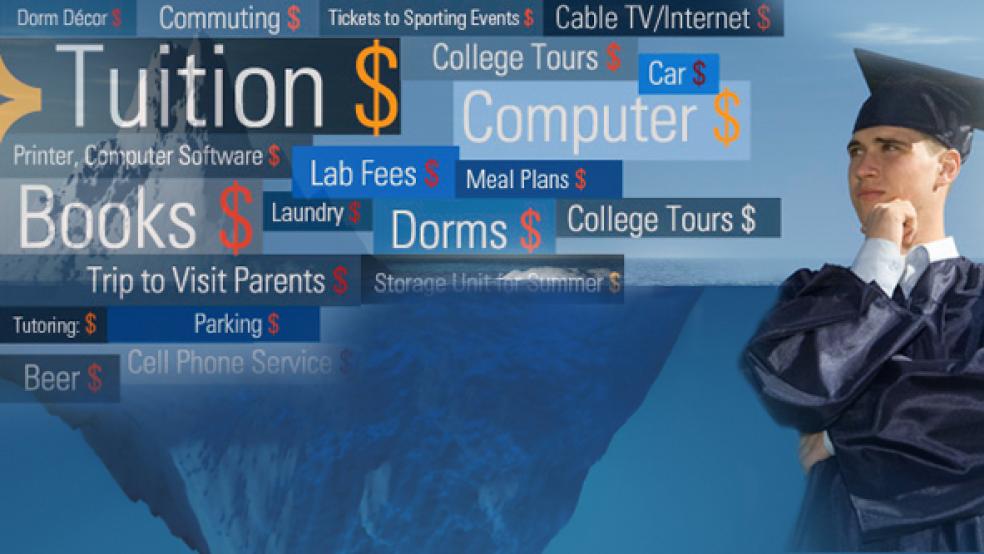It’s been a busy time for student loan legislation. As student debt continues to skyrocket, the government has been busy tweaking eligibility requirements, interest rates, and funding for federal loans – with many changes going into effect on July 1. Private student loans have also been under the microscope lately, with a number of policymakers pushing for reforms. Here are 11 recent changes and surprising facts about student loans.
1. Grad students can no longer receive subsidized loans. One little-known provision in the Budget Control Act that was signed into law on August 2, 2011 eliminated subsidized loans from the federal government for graduate and professional students. They can still receive unsubsidized federal loans, but they are responsible for the interest that accrues on the loan while they’re in school. That change took place on July 1, 2012.
2. Funding has been cut for families making between $23,000 and $32,000 a year. Another surprising change, effective July 1 this year will affect low-income families. When filling out the FAFSA, families receive an Expected Family Contribution number, and typically any family with an income of $32,000 or less received a zero, which made them eligible for more aid. The income limit has now been reduced to $23,000.
3. Congress approves low student loan rates, but they may not help much. Though Congress recently prevented the low interest rate of 3.4 percent from doubling for students with subsidized federal loans, the savings will not be substantial for borrowers. A third of fourth year student who borrowed the maximum $5,500 would save only about $9 a month. The 3.4 percent rate would also not be extended to higher-rate loans issued before the 2011-12 school year.
4. A rise in defaults. About 5 million federal loan borrowers are in default (meaning they have failed to make payments for 270 days or more), and 850,000 private loans are in default. In total, this adds up to about $67 billion of defaulted student loans. To help collect payments from students who have defaulted on their federal loans, the Education Department has started hiring private debt-collection companies.
5. The perils of private student loans. The private student loan market went from less than $5 billion in 2001 to over $20 billion in 2008 – a 300 percent increase (though due to tighter credit standards and regulations today, that number has since decreased), according to a recent report from the Consumer Financial Protection Bureau (CFPB). Some 2.9 million students currently have private loans, owing about $150 billion total. In 2007, 70 percent of private loans were made to undergraduates without their school’s involvement, and interest rates on private loans can range from 5 percent to 18 percent, with no limits on fees and penalties.
6. Jobless and indebted. For private loan borrowers who started school in the 2003-2004 academic year (and entered the job market in 2008 if they gradated in four years), the unemployment rate was 16 percent in 2009, according to the CFPB report.
7. The right to declare bankruptcy on student loans is being questioned. Last week, the CFPB sent a proposal to Congress, urging them to grant private loan borrowers the right to declare bankruptcy. Though every other type of consumer debt is protected by bankruptcy laws, Congress banned bankruptcy as a way out of student loan debt back in 1977. The CFPB proposal was strongly opposed by many conservative policymakers, arguing that this would create a hardship for private lenders.
8. Drowning in debt. Ten percent of recent graduates of four-year colleges have monthly student loan payments that exceed 25 percent of their income (for a graduate making the average starting income of $41,701, that’s $869 a month).
9. Student loans are the fastest-growing category of household debt. Mortgage, credit care, and home equity debt levels have all declined since the recession.
10. It’s not just the young. According to a recent report by Barclays, 15.5 percent of outstanding student loan balances are held by Americans ages 50 to 59, and 4.2 percent are held by those 60 and older. And the average remaining debt balance for borrowers over 60 is $18,250.
11. But there are some creative ideas out there on how to help. Niagara Falls, New York, for example, is offering $7,000 to recent graduates to help them pay off their students loans – but only if they relocate to the declining city. An innovative new site, Tuition.io, will also launch this August. Set up similarly to Mint.com, the site can tell you how much you need to pay each month, how to contact each lender, how much you owe each lender, and will automatically notify you when there are changes to a loan, like if it qualifies for federal consolidation.





